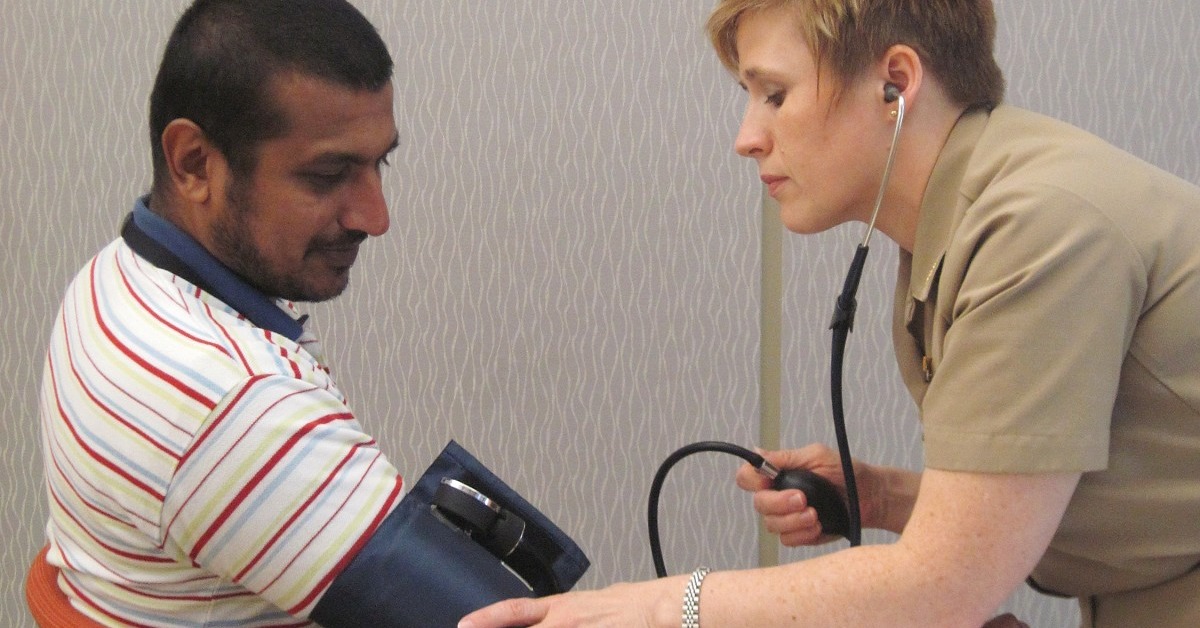
Where Can a Family Nurse Practitioner Work?
You'll find FNPs in primary care clinics, hospitals, urgent care [...]

Physician assistants are in high demand; the U.S. Bureau of Labor Statistics projects rapid growth in the field, with 31 percent more jobs from 2020 to 2030. Those jobs should be well-paid; PAs earned a median annual income of $121,530 in 2021.
PAs earn their keep. They make sophisticated medical decisions just as doctors do. Millions of patients trust PAs each year.
Most PA programs prefer applicants with existing healthcare backgrounds, including patient care experience. More than 90 percent of applicants enter programs with previous healthcare experience, according to the American Academy of Physician Assistants (AAPA). The average PA student has
three years of experience in such roles as nursing assistant, medical assistant, scribe, EMT/paramedic, emergency room technician, and home health aide.
If you’re considering studying to become a PA, you might want to consider an online PA program. You’ll save time and money by not traveling to and from campus for classes while receiving the same education you would in a traditional on-campus program. PA programs are demanding; most students look for ways to maximize their study time, and online study certainly helps with that.
This article on online physician assistant programs covers:
Only a limited number of online and hybrid physician assistant master’s programs are currently available. This section reviews a few top choices.
UND students complete a hybrid program that includes both live and recorded online coursework. They spend 15 weeks on campus across six sessions. Because UND focuses on rural populations, it prioritizes applicants from those backgrounds. All applicants must have at least 1,000 hours of health experience.
UND claims a PANCE pass rate of 98 percent (across a five-year aggregate). Graduates have worked for Sanford Health, Altru Health System, Essentia Health, and Fairview Health Services.
Another hybrid program with several online courses, Pitt offers students 850 clinical placement sites for their eight clinical rotations. Learning objectives include health literacy, population health, patient care, and care law. Pitt prioritizes minority applicants and those who work in underrepresented healthcare areas.
The first year of this program is didactic. The second year consists of five-week clinical rotations. In addition to staples like pediatrics, family medicine, surgery, and internal medicine, Pitt requires an elective rotation. This allows students to either revisit a rotation they enjoyed or collaborate with faculty to develop a new focus.
This hybrid program is delivered primarily online, but Yale requires three one-week on-campus immersion experiences, including simulated care experiences at the Yale Center for Medical Simulation and speaker seminars. Students complete clinical rotations locally. Yale does not require as many prerequisite work hours (just 500) as other programs. Applicants must demonstrate a 3.0 GPA minimum for both science-specific coursework and overall. Students jump straight into clinical practice during their first year, a unique feature of the Yale program.
Not many online PA programs exist, but those that do meet the same accreditation standards as their in-person counterparts. Fully online PA programs are impossible since students must complete their clinical rotation hours and lab coursework in person. Programs vary in the amount of in-person time they require, but all require some.
PA programs can deliver substantial amounts of content online, allowing students the convenience of at-home learning and the flexibility of asynchronous learning via recorded lectures. If you juggle multiple responsibilities and/or live far from campus, online study can represent an essential time-saver.
Online programs don’t offer as many opportunities for face-to-face interaction and networking, but schools work to address this potential shortcoming. They provide discussion boards and video chats to foster camaraderie among online students and help them avoid isolation.
These medical professionals practice with a high-level of autonomy without needing to complete as many years of training as doctors. They can examine, diagnose, counsel, treat, run and interpret tests, write prescriptions, and conduct research.
Like doctors and nurse practitioners, PAs can specialize. Unlike doctors and NPs, they have an easier time changing specializations throughout their careers. This is a result of the generalist education PAs complete. PAs may pursue additional post-graduate certification(s) to specialize further.
Most (53 percent) PAs work in physicians’ offices, according to the BLS. Many others (26 percent) work in hospitals. PAs may practice in specialized settings like nursing homes or the special surgery unit in a hospital.
PAs need a master’s degree. Though schools may set different timelines for the degree, the AMA Journal of Ethics says programs typically take around two years (an average of 26.5 months). PA degrees may be offered as a Master of Science in Physician Assistant Studies (MSPAS), a Master of Clinical Health Services (MCHS), or a Master of Health Sciences (MHS). Just be sure your degree meets Accreditation Review Commission on Education for the Physician Assistant (ARC-PA) standards.
After completing a degree, you’ll need to pass the Physician Assistant National Certifying Examination (PANCE) to become Physician Assistant-Certified (PA-C) and qualify for licensure. The National Commission on Certification of Physician Assistants organizes the exam. The PANCE lasts five hours and covers everything PAs need to know, including surgery and primary care practices. After passing, PA-Cs must meet their state’s licensure requirements, which typically include a background check and proof of education.
Maintaining your credential is the final step. PAs complete 100 continuing education hours biannually, then take a recertification exam in their tenth year. Starting in 2023, PAs can complete the recertification exam in pieces beginning in their seventh post-initial certification year.
PA master’s programs typically impose strict admissions requirements; schools prefer students with a STEM degree. According to the most recent PAEA report, most students (41.5 percent) pursued biology or a subfield like anatomy, physiology, or microbiology for their bachelor’s degree. The next-most-popular degrees include health sciences (14.8 percent), exercise science or athletic training (8.8 percent), psychology (5.7 percent), kinesiology (4.8 percent), and chemistry (4.1 percent).
Though most students pursue science during their bachelor’s degree programs, applicants from non-traditional backgrounds like business, history, philosophy, engineering, education, and communications occasionally get in. Those who pursue a non-science undergraduate degree must pass remedial coursework, such as introductory biology, before they start a master’s. Medical volunteering and community service may help career-changers.
Applicants also need experience. Schools typically require at least a few hundred hours (usually over 1,000) of relevant experience. Medical volunteering and community service can help career changers compensate for their lack of work experience.
Though every school has different coursework requirements, all degree programs adhere to AAPA standards. They must cover physiology, anatomy, physical diagnosis, pharmacology, medical ethics, pathophysiology, and pharmacology. Each program also guarantees at least 2,000 clinical rotations hours.
PAs are known as generalists who focus on preventative care. This statement can be misleading because PAs have many opportunities to specialize. The Mayo Clinic counts cardiology, family medicine, dermatology, anesthesia, internal medicine, and surgery among top specializations.
PAs have several ways to specialize, including through clinical rotations. For instance, a pediatric rotation qualifies PAs for work in a pediatrician’s office after graduating. PAs may decide to complete further training after earning their physician assistant master’s degree, such as a fellowship or certification.
(Last Updated on February 26, 2024)*
Questions or feedback? Email editor@noodle.com

You'll find FNPs in primary care clinics, hospitals, urgent care [...]

We explain the steps necessary to become a licensed mental [...]

On average, health services managers earn over $100,00 per year. [...]

Nurse practitioners (NPs) typically earn six figures, but NP salaries [...]

Family nurse practitioners provide many of the same services as [...]
Categorized as: Physicians Assistant Studies, Nursing & Healthcare